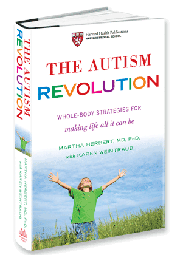Prevention is potentially a contentious idea because people with autism may feel that their very existence would be prevented by some of the “prevention” programs under consideration.
To evaluate this concern it may help to flesh out what “prevention” might mean depending on your answers to the questions of “What is Autism?” and “What Causes Autism?”.
Prevention from genetic model of autism vantage point: If genetic research identifies a “gene for” autism that allows mothers to terminate pregnancies when that gene is identified, and if you believe that autism is a cultural variant, you will consider this approach to prevention a form of genocide.
Others may object to this approach to prevention because among the hundreds of genes associated with autism, most are poorly predictive and none are 100% predictive. Many people feel that genes will never be be strongly predictive. And even if they were, using these genes to terminate pregancies implies belief in autism as a grossly undesirable impairment.
Prevention from a physiological model of autism vantage point: Another approach to prevention comes from the physiological model of what causes autism. In this model, maternal problems with inflammation, toxic exposures, energy production, immune dysfunction and metabolism create an in utero environment that leads to higher risk that the infant will develop autism. After birth risks can come from antigens and other undesirable substances (e.g. pesticides) in mother;s milk. Prevention here involves optimizing the health and nutrition status of the mother so that the risks to the fetus and infant are reduced.
From the total load/pathophysiological point of view, autism is something that develops through progressive degradation of physiological integrity through an accumulation of exposures in combination with insufficient supports (nutritional and other). This leads to a view of prevention as involving a two pronged approach: reducing risks and increasing resiliency.
- Reducing risks
- Food – avoid junk and processed food
- Toxins- avoid toxic exposures whenver possible
- Bugs – minimize infections exposures
- Stress – avoid excessive stimulation and overload
- Increasing resiliency
- food – optimize high nutrient density food
- Toxins – keep the biological systems that handle toxin elimination as healthy as possible
- Bugs – maintain the health and diversity of the gut microbes through fermented foods, yogurt and kefir and/or probiotics because healthy gut flora support the immune system and many metabolic functions
- Build protections against stress:
- Increase maternal-infant and parent-child synchrony, sensitivity and quality of relationships
- develop sensory friendly environments
- Follow a “sensory diet” for an optimal level of stimulation
- Build skills so situations can be handle-able instead of overwhelming
- Support development of regulation and co-regulation
Prevention from a neuromolecular defect model vantage point: If you think that built-in synaptic dysfunction is the cause of autism you may look to pharmacological intervention in infancy to head off excessive brain excitation that is thought to be one of the core neural features of autism. This approach is presently discussed in some papers probably purely theoretical. It raises two concerns: 1) drugs may have significant undesired additional impacts on brain development and health, and 2) brain excitation may be downstream of other processes (e.g. degraded physiology) that will not be addressed by this approach.


